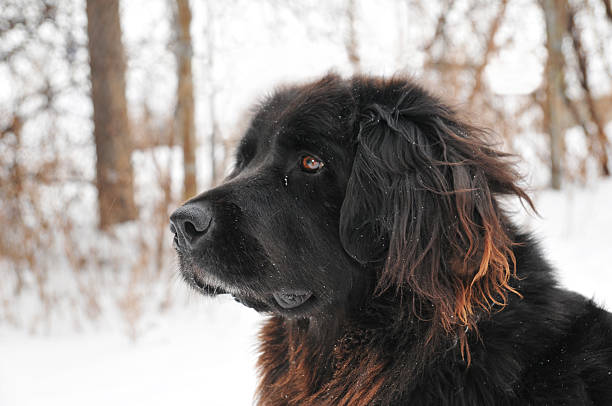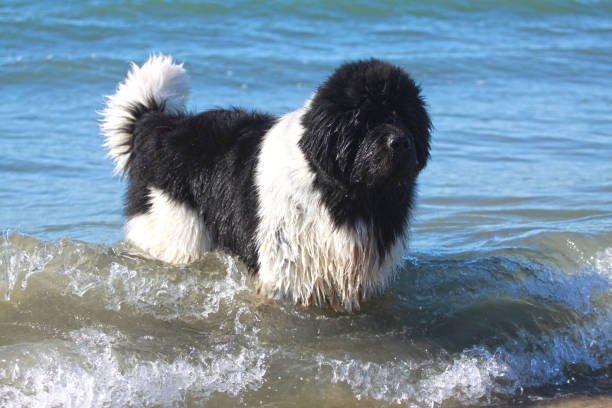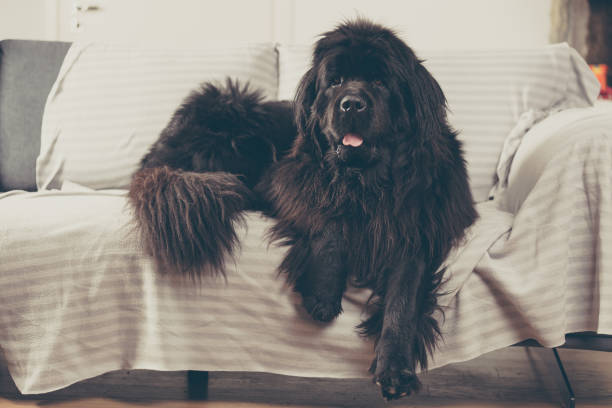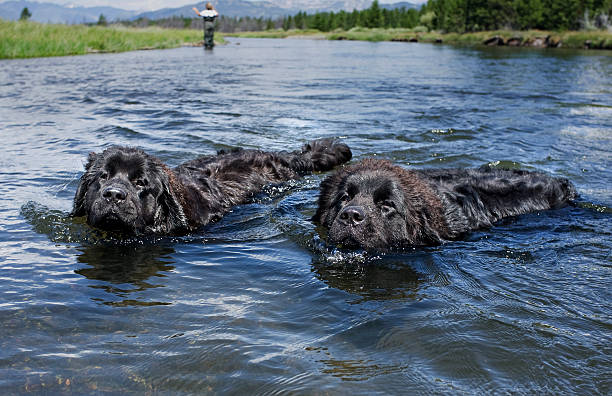Newfoundland

Breed History:
The Newfoundland is a large working dog originally bred in Newfoundland, Canada, where it was developed to assist fishermen with water rescues and hauling heavy nets. A strong swimmer with webbed feet and a water-resistant coat, the breed was indispensable in the harsh North Atlantic conditions. Its ancestry includes Great Pyrenees, mastiff-type dogs, and possibly native Canadian breeds.
Renowned for its gentle temperament and incredible strength, the Newfoundland quickly gained popularity beyond its homeland. It was admired by historical figures like Sir Edwin Landseer, whose paintings helped popularise the breed in Europe. Today, the Newfoundland remains one of the most beloved giant breeds, often referred to as a “gentle giant” for its calm, affectionate nature and heroic history of lifesaving.
Considering adopting an Newfoundland or a similar giant breed? Check out our page "How to look after a Great Dane" detailing what to consider before adopting and our recommended products for a Great Dane and other giant dog breeds.
|
Gender |
Height |
Weight |
|
Male |
71 cm |
60–70 kg |
|
Female |
66 cm |
45–55 kg |
Size – Giant
Life Expectancy: 8–10 years

Breed Appearance:
The Newfoundland is a massive, heavily boned dog with a broad chest, strong back, and powerful limbs built for strength and swimming. Its thick, water-resistant double coat provides insulation and protection in cold climates, and comes in colours such as black, brown, grey, and the distinctive black-and-white “Landseer” pattern.
The head is large and broad, with a short muzzle, expressive dark eyes, and small ears that lie close to the head. Its tail is long and bushy, often carried low. One of the most striking features is the webbing between the toes, aiding in its natural swimming ability. Despite its bulk, the Newfoundland moves with surprising grace and power.
Breed Type – Family/Working:
Primarily a working and family companion, the Newfoundland is known for its calm, loyal, and sweet-natured demeanour. It thrives in family environments and is exceptionally gentle with children, earning it the nickname “nanny dog.” Its natural protective instincts are subtle—it is not aggressive, but will intervene if it perceives a threat to its family.
This breed’s devotion and stable temperament make it a superb companion dog. It is not a watchdog in the traditional sense, as it rarely barks or displays territorial behaviour, but its sheer size and presence can deter intruders. Patient and affectionate, it bonds deeply with its family and enjoys being included in daily activities.

Training:
The Newfoundland is intelligent, eager to please, and typically easy to train, especially with positive reinforcement methods. It responds well to gentle, consistent guidance and forms strong bonds with its trainer. Harsh training methods are unnecessary and counterproductive for this sensitive breed.
Early socialisation and basic obedience training are essential, especially given the breed’s eventual size and strength. Teaching leash manners and polite behaviour around people and other animals should start in puppyhood. The Newfoundland excels in water rescue, therapy work, and obedience when properly motivated and trained with kindness and patience.
Health & Care:
While generally healthy, the Newfoundland is prone to certain genetic and size-related health conditions. Common issues include hip and elbow dysplasia, subvalvular aortic stenosis (a heart condition), cystinuria (a urinary disorder), and bloat (gastric torsion). Regular veterinary check-ups and early screening can help manage these risks.
Proper nutrition, joint supplements, and weight management are crucial to reduce stress on the joints. Due to its thick coat, regular grooming is needed to prevent matting and skin issues. With appropriate care, a Newfoundland can enjoy a healthy and comfortable life, even into its senior years.

Living Conditions:
The Newfoundland thrives in spacious homes with access to a yard or open space, but can adapt to indoor living as long as it receives adequate exercise. It is not suitable for small apartments due to its size and heavy coat. Because of its thick fur, it prefers cooler climates and should always have shade and fresh water available in warm weather.
Though calm indoors, this breed needs regular walks and playtime to stay healthy. Swimming is an excellent form of exercise for the Newfoundland and plays to its natural strengths. Its friendly demeanour makes it well-suited to families, especially those who enjoy the outdoors or live near water.
Exercise:
Newfoundlands require moderate daily exercise to stay healthy and prevent obesity. Daily walks, free play in a yard, or swimming sessions are ideal. The breed is not overly energetic, but regular activity helps maintain muscle tone and mental health.
Due to their heavy build, avoid high-impact exercise, especially during puppyhood when bones and joints are still developing. Swimming is especially beneficial—it’s low impact and deeply satisfying for a breed that was made for water. Exercise should be balanced and adapted to the weather, as the breed can easily overheat in warm temperatures.
Grooming:
The Newfoundland’s dense double coat requires consistent grooming to remain clean and mat-free. Weekly brushing is necessary year-round, with increased frequency during seasonal shedding periods in spring and fall. A slicker brush and undercoat rake are helpful tools for managing the thick fur.
Bathing can be done every few months or as needed, and always thoroughly dried to prevent moisture buildup. Regular ear cleaning helps prevent infections due to their floppy ears. Nail trimming and dental care should also be part of the grooming routine. Owners must be prepared for seasonal shedding and regular upkeep to keep the coat and skin healthy.

Advantages:
-
Exceptionally gentle, affectionate, and good with children
-
Natural swimmer and water rescue dog with heroic instincts
-
Intelligent and trainable with a calm demeanour
-
Makes a loyal, dependable family companion
-
Minimal barking and non-aggressive behaviour
-
Good with other pets when socialised early
Disadvantages:
-
Requires significant grooming due to its thick, shedding coat
-
Prone to size-related health issues like hip dysplasia and bloat
-
Shorter lifespan compared to smaller breeds
-
Needs ample space; not ideal for small homes or hot climates
-
Heavy drooler, especially after drinking or eating
-
Exercise must be managed to avoid joint stress in puppies

